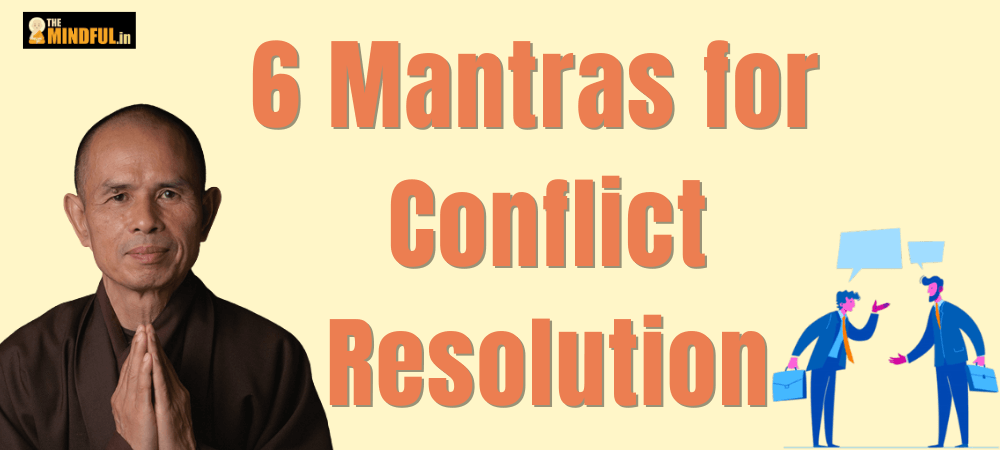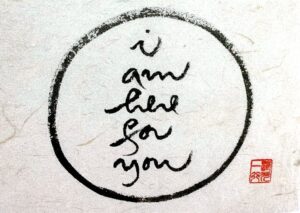Being misunderstood by your near and dear ones can sometimes be a harrowing experience. And there is an important key to be noted in such scenarios to enable resolution through 6 Mantras for Conflict Resolution Training. Such matters should not be discussed with anyone else apart from the person who supposedly has misunderstood you. By unnecessarily broadcasting your conflicts amongst family/friends, you may end up in a bigger mess than ever before, and things will eventually take much more time to disentangle and resolve. And maybe in the worst cases never resolve at all.
There is no one in this world willing to create sorrow for themselves or their loved ones. But our egos many a time drive our behaviour and we end up saying or behaving in a manner we would have never wanted. And then the situation grows darker and darker with each moment that passed. Many of us have seen ourselves or our loved ones saying, “Leave me alone; I can’t handle this anymore.” And this is the most crucial time when we never want to be alone. We are in pain, and we want to get relieved from it. There is no reason for us to carry that pain till eternity. We need to let go that burden which makes us heavy.
But, the issue is that the ego does not allow us to unburden ourselves(if a word like that exists :).
6 Steps for Conflict Resolution Training
There are six mantras of Thich Nhat Hanh that may be applied in Conflict situations.
Before you begin, perform three Deep breaths- “Breathe In…And Out” to bring calm yourself and then tell these six mantras sequentially or may be either one that holds relevant to you specific situation
The 6 mantras of conflict resolution as taught by Thich Nhat Hanh are:
- “I am here for you.”
- “I know you are there and I am happy.”
- “I know you suffer, that is why I am here for you.”
- “I suffer, please help.”
- “This is a happy moment.”
- “You are partly right.”
The First Mantra- I am here for you
The first mantra, “I am here for you,” stresses the need of being supportive of the opposing party when there is a dispute. By repeating this mantra, we pledge to giving the other person our whole attention and presence. This requires that we listen without bias, without passing judgement, and without attempting to impose our own opinions. It also entails recognising the suffering or annoyance of the other person and demonstrating empathy and compassion. We communicate to the other party that we are dedicated to working together to resolve the dispute by saying, “I am here for you,” and that they are not in this battle alone.
I know you are there and I am delighted
The second mantra, “I know you are there and I am delighted,” is about acknowledging and appreciating the other person’s presence. By repeating this phrase, we may show the other person how much they mean to us and how grateful we are to have them in our life. This can contribute to the development of trust, which is crucial for settling disputes and for fostering a pleasant environment. It also aids in keeping our attention in the here and now rather than becoming lost in regrets from the past or concerns for the future.
I know you suffer, that is why I am here for you
The third mantra is about having empathy for the other person’s suffering: “I know you suffer, that is why I am here for you.” We can empathise with others more fully and connect with them more deeply when we recognise that they are suffering. We are showing them that we are committed to assisting them in finding relief from their suffering by saying, “that is why I am here for you.” This can aid in lowering defensiveness and promoting openness, both of which are crucial for resolving disagreements.
I suffer, please help
The fourth mantra, “I suffer, please help,” emphasises the importance of being open to receiving assistance when necessary. By admitting our personal suffering, we demonstrate to the other person that we are also human and that we struggle with pain and problems. This can lessen the tendency to hold one another accountable or to criticise one another and foster a sense of common humanity. By asking for assistance, we demonstrate that we are willing to work with others to discover solutions as opposed to attempting to handle the issue alone.
This is a happy moment
The fifth mantra, “This is a happy moment,” emphasises the importance of embracing happy and joyful moments even when they arise in the midst of turmoil. Positive events and feelings can help change the conflict’s energy from one that is negative to one that is constructive. This can foster a more cooperative environment for problem-solving by lowering tension and defensiveness.
You are partly right
The sixth mantra, “You are partly right,” encourages us to accept the viewpoint of others even when we don’t entirely concur with it. We can demonstrate respect and foster trust by acknowledging that the viewpoint of the other person might contain some truth. By doing so, it may be possible to foster a more cooperative environment for problem-solving rather than fall into a “me versus. you” mindset. Also, it can foster open discourse and assist diffuse defensiveness.
More often than you would think, your conflicts will stand resolved even before things begin to entangle. The relationships will stay happy and so do you. Life is simple and has pretty simple solutions in place for the most complex issues we may face.
The above 6-point method is obviously not my discovery and comes from the great master Thich Nhat Hanh, as quoted in his book, The Art of Communicating. The book is a must-read if you want to imbibe a sense of calm in your conversations and take your life to a new mindful corner where There is peace in every step 🙂 (btw that is another book by Thich Nhat Hanh ). This was all for now. Share any experiences you may have that helps us get better in this art of conflict resolution, or maybe you can share your suggestions and feedback if you liked or disliked any part of this post.


